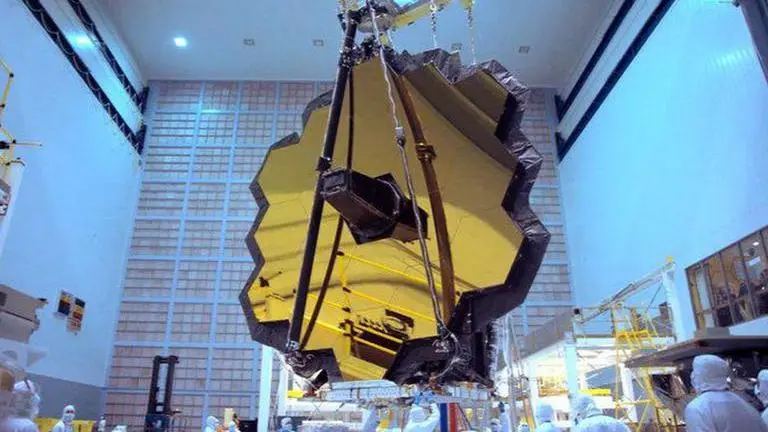Updated 24 January 2022 at 16:27 IST
ESA elaborates on James Webb Space Telescope's instruments before orbit insertion; READ
According to NASA, the engineers will fire James Webb telescope's thrusters to begin the orbit insertion process at 12:30 am (IST) on January 25.
- Science News
- 3 min read

The James Webb Space Telescope is set to enter its orbit after traveling 1.5 million kilometers since its launch on December 25, 2021. Webb is headed towards the second Lagrange point (L2), which is a gravitationally stable point and has been chosen to help the telescope in its forthcoming observations. As of now, the telescope has completed over 99% of its estimated 29-days-long journey, as per NASA's live Webb tracker.
According to NASA, the engineers will fire Webb's thrusters to begin the orbit insertion process at 12:30 am (IST) on January 25. But before this process begins, let us take a look at the European Space Agency's (ESA) explanation of the James Webb Space Telescope's two major state-of-the-art instruments.
The Mid-InfraRed Instrument
1/ The Mid-InfraRed Instrument #MIRI is one of 4 instruments on the James #Webb Space Telescope. The only mid-infrared instrument in its instrument suite. #WebbSeesFarther
— ESA Webb Telescope (@ESA_Webb) January 23, 2022
📷 NASA/ Chris Gunn pic.twitter.com/8F8d9tjX8P
Built under the collaboration of ESA with NASA's Jet Propulsion Laboratory and Goddard Space Flight Center, the Mid-InfraRed Instrument or MIRI has been designed to deliver mid-infrared images and spectra with an unprecedented combination of sharpness and sensitivity. According to ESA, this device is fully capable of penetrating thick layers of dust obscuring regions of intense star birth. This would allow Webb to the very first generation of galaxies from billions of years ago as well as study the sites of planet formation. In addition to this, the telescope using MIRI will be able to detect the light emitted, reflected or transmitted by exoplanets orbiting other stars outside our solar system.
The Near-Infrared Spectrograph (NIRSpec)
1/ The Near InfraRed Spectrograph #NIRSpec is one of 4 instruments on the James #Webb Space Telescope. The primary goal of NIRSpec is to enable large spectroscopic surveys of astronomical objects such as stars or distant galaxies. #WebbSeesFarther 📷 @esa /ATG medialab pic.twitter.com/P1mSNNZoNc
— ESA Webb Telescope (@ESA_Webb) January 21, 2022
The NIRSpec is the second of Webb's four major instruments apart from the Near-Infrared Camera (NIRCam) and the Fine Guidance Sensor/ Near InfraRed Imager and Slitless Spectrograph (FGS/NIRISS). NIRSpec's main objective is to allow large spectroscopic surveys of stars and galaxies and it basically has three modes of operation-- multi-object spectroscopy mode, fixed slits spectroscopy mode and integral field spectroscopy mode.
Advertisement
1/ #NIRSpec has three modes of operation: multi-object spectroscopy mode, fixed slits spectroscopy mode and integral field spectroscopy mode:
— ESA Webb Telescope (@ESA_Webb) January 22, 2022
ESA explains that the first mode would help Webb record the spectra of up to 200 objects at the same time whereas the second mode would help it observe objects in high contrast through a set of five fixed slits. "It will provide high contrast spectra of sources and a key to the study of exoplanets", ESA said. Finally, the fourth mode reorganizes the signal from a 2D image into a set of slices, through which a spectrum is generated for each pixel are then arranged into a datacube. Interestingly, it is this instrument that would study objects embedded in shrouds of gas and dust, and scan extrasolar planets to find if they possess the water. Webb's other instruments include Near-Infrared Camera (NIRCam) and the Fine Guidance Sensor/ Near InfraRed Imager and Slitless Spectrograph (FGS/NIRISS) to support the findings by the other two.
Published By : Harsh Vardhan
Published On: 24 January 2022 at 16:27 IST
